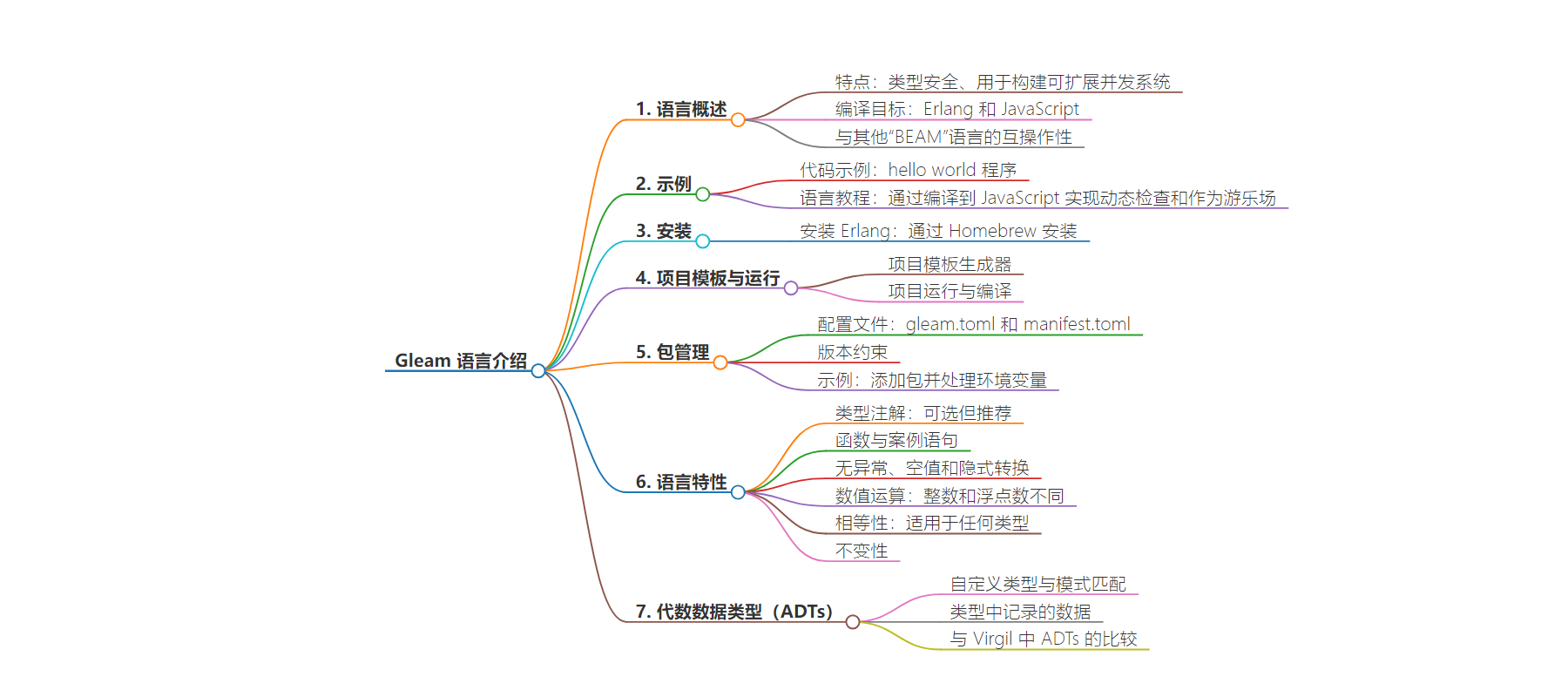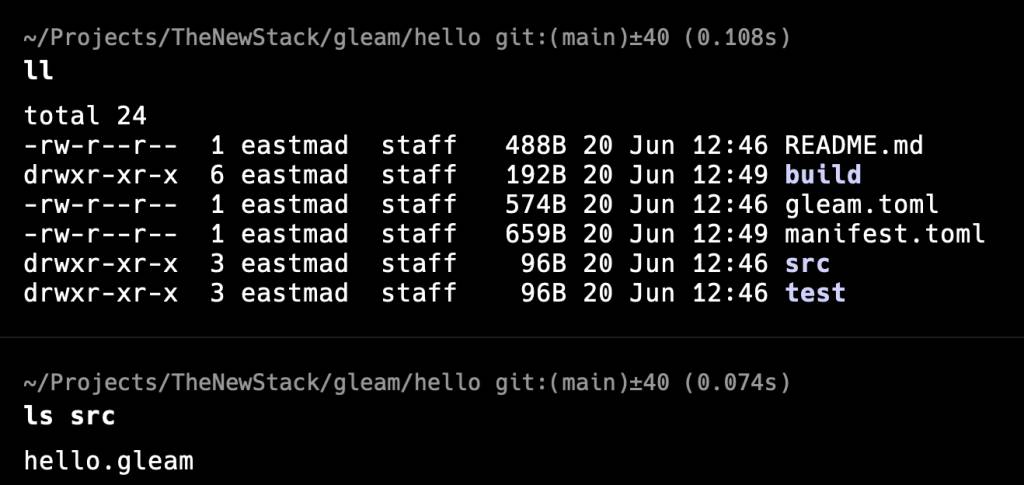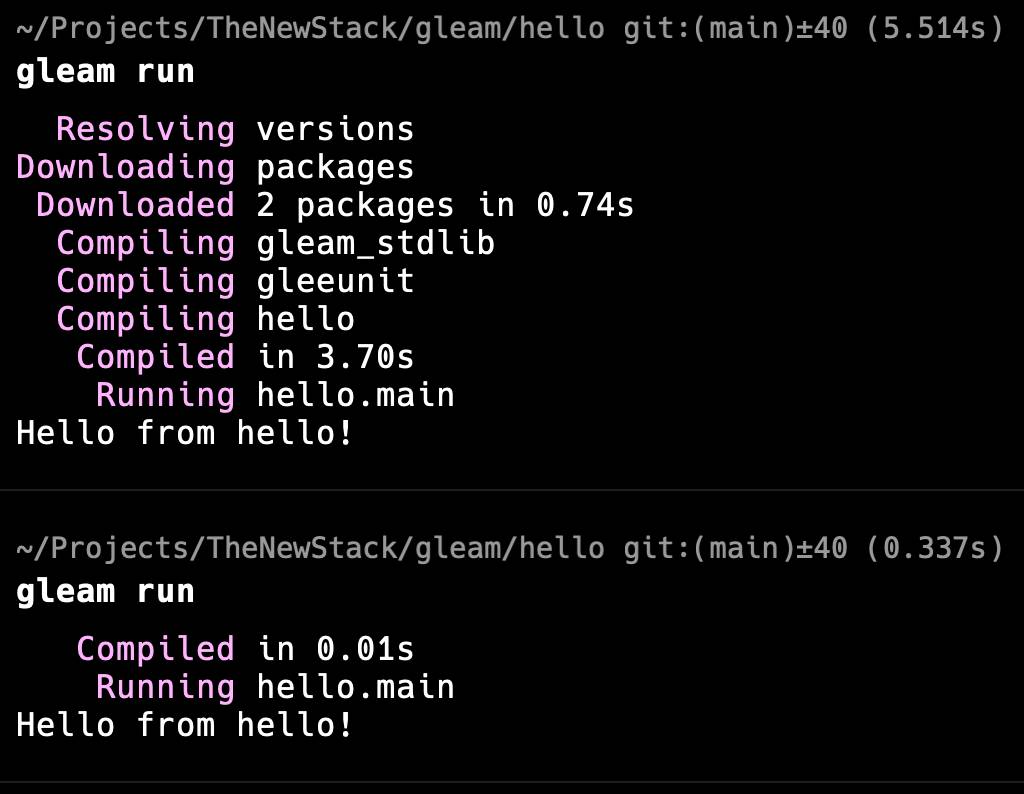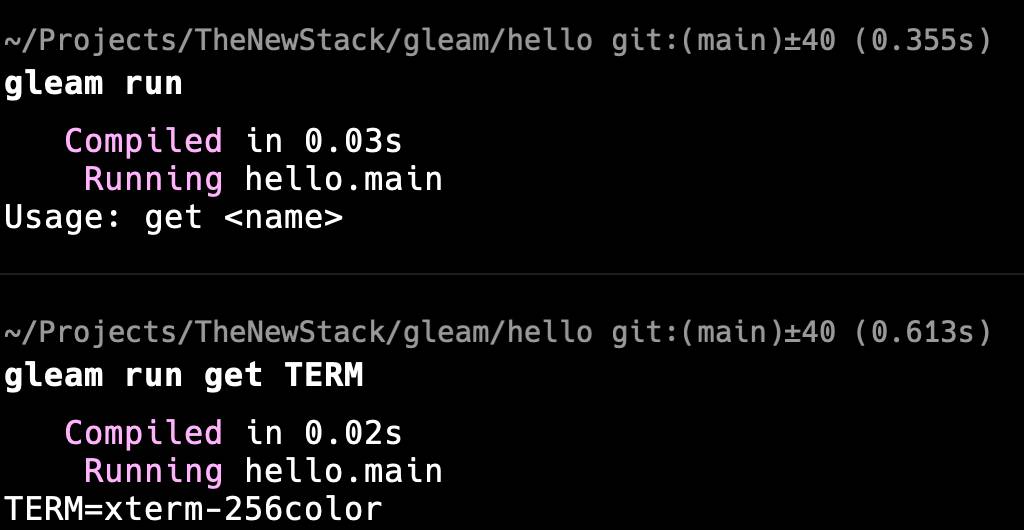包阅导读总结
1.
关键词:Gleam、Functional Programming、Erlang、Concurrent Systems、Package Management
2.
总结:本文介绍了新的函数式编程语言 Gleam,包括其特性如类型安全、可编译到 Erlang 和 JavaScript 等,还涵盖了安装、基本示例、包管理及代数数据类型等内容。
3.
主要内容:
– 介绍 Gleam 语言
– 是类型安全的函数式编程语言,用于构建可扩展并发系统。
– 版本 1 于今年 3 月发布,偏向函数式编程。
– 编译到 Erlang 和 JavaScript,与 BEAM 语言可互操作。
– 安装与示例
– 安装 Gleam 需安装 Erlang,可通过 Homebrew 完成。
– 有语言游览和模板生成器,提供默认代码。
– 包管理
– 有两个.toml 文件作为配置。
– 可添加包如 envoy 和 argv 并编写代码处理环境变量。
– 功能特性
– 无 null、无隐式转换和异常,数值运算区分整数和浮点数。
– 支持灵活的 case 语句模式匹配。
– 代数数据类型
– 有自定义类型和记录类型,可进行模式匹配。
思维导图:
文章地址:https://thenewstack.io/introduction-to-gleam-a-new-functional-programming-language/
文章来源:thenewstack.io
作者:David Eastman
发布时间:2024/6/21 17:35
语言:英文
总字数:1397字
预计阅读时间:6分钟
评分:81分
标签:教程,函数式编程,Gleam,Erlang,JavaScript
以下为原文内容
本内容来源于用户推荐转载,旨在分享知识与观点,如有侵权请联系删除 联系邮箱 media@ilingban.com
When my colleague read my Virgil post, he immediately suggested I look at Gleam. It is cool and new — version 1 was released in March this year — and comes out solidly on the functional side of programming life.
Gleam is a type-safe functional programming language for building scalable concurrent systems. It compiles to Erlang and JavaScript, so has straightforward interoperability with other “BEAM” languages such as Erlang and Elixir. (BEAM is the virtual machine that executes user code in the Erlang Runtime System. I believe its short for Bogdan’s Erlang Abstract Machine. Don’t ask.)
Erlang was an early telecoms industry language, very much focusing on concurrency and fault tolerance. Its ways of doing things is still respected and accounts for Elixir’s popularity. In this post, I won’t assume you are familiar with these; and actually, Gleam is particularly friendly, so it doesn’t make too many assumptions either.
Let’s start with hello world:
|
import gleam/io
pub fn main() { io.println(“hello world!”) } |
This is pretty similar to the same thing in Zig.
There is a very pleasant language tour that makes use of Gleam’s compiling to JavaScript to give dynamic checking. You can also use it as a playground.
Installing Gleam also means installing Erlang. For my Mac, I just used Homebrew:
Homebrew installs Erlang, automatically.
Gleam comes with a template (or project) generator, much like Rails. So to make a new hello project, I just typed:

Rather than saving time for the moment, the “hello world” style one-liner is already there as the default code in hello.gleam:

If I run the whole project:

Note that the two packages were only compiled on the first run.
Package Management
There are two .toml files (apparently Tom’s Own Markup Language. Don’t ask), which act as configuration.
As they should be simple, we can have a quick peek. In the gleam.toml:
|
[dependencies] gleam_stdlib = “>= 0.34.0 and < 2.0.0” |
Note that they have a version constraint — mentioning the maximum version in order to reduce incompatibility.
The actual version downloaded and used is mentioned in the manifest.toml.
We can learn a little Gleam and work with the package manager if we follow a simple example. We’ll add a couple of packages, and write some code to print out environment variables. I’ll use the same hello project template, but with the new code inserted.
First, we’ll add the new packages to allow environment reading (envoy) and the reading of command line arguments (argv) — which you might expect to be built-in but might reflect system differences.

So let’s replace the code in hello.gleam with the code to print out environment variables on demand:
|
1 2 3 4 5 6 7 8 9 10 11 12 13 14 15 16 17 18 19 20 |
import argv import envoy import gleam/io import gleam/result
pub fn main() { case argv.load().arguments { [“get”, name] –> get(name) _ –> io.println(“Usage: get <name>”) } }
fn get(name: String) –> Nil { let value = envoy.get(name) |> result.unwrap(“”) io.println(format_pair(name, value)) }
fn format_pair(name: String, value: String) –> String { name <> “=” <> value } |
Added to the public main entry point, we have two functions. They use exactly the same format as we saw in Virgil. It turns out that type annotations are optional, but considered good practice. Now, we get a bit functional. The argv load does what you expect, and pulls in a list of hopefully exactly two strings — with the first string equal to “get”. This is used in a case statement.
As a quick aside, the Gleam case is a little more flexible than in most non-functional languages. Here we see a lists’ contents being compared:
|
let result = case x { [] –> “Empty list” [1] –> “List of just 1” [4, ..] –> “List starting with 4” [_, _] –> “List of 2 elements” _ –> “Some other list” } |
So, patterns can be compared in case statements. That underline _ represents a default, and the possible cases are exhaustively checked.
Going back to our environment variable reading code, if the pattern isn’t a list of two strings, then the helper text is spat out. Otherwise, it calls the get function.
We see the pipe function, which just helps to make long functional calls a little more readable from left to right.
|
let value = envoy.get(name) |> result.unwrap(“”) |
This is the same as:
|
let value = result.unwrap(envoy.get(name),“”) |
Because Gleam doesn’t throw exceptions, it uses the built-in Result type, and unwrap fetches the good path value.
The final oddity is:
…which is just string concatenation.
And here I run it, with the required arguments the second time:

Gleam has nonull, no implicit conversions, and no exceptions. So if it compiles, you are good. Also, there is no numerical operator overloading, so the code for adding integers is different to that for adding floats:
|
io.debug(1 + 1) //ints io.debug(1.0 +. 1.5) //floats |
Equality works for any type. The general concept of immutability is best experienced by using a functional language for a bit, so I won’t gloss over it. It does help cut out a whole subset of bugs.
Algebraic Data Types
Finally, we saw Algebraic Data Types (ADTs) used in Virgil, so I’m keen to see how the equivalent works in Gleam. In fact, we’ve already seen the use of the case statement.
We get custom types, which we pattern match over. So we are part of the way there:
|
pub type Season { Spring Summer Autumn Winter }
fn weather(season: Season) –> String { case season { Spring –> “Mild” Summer –> “Hot” Autumn –> “Windy” Winter –> “Cold” } } |
Types can hold data in records, which is how we get close to my Virgil example:
|
1 2 3 4 5 6 7 8 9 10 11 12 13 14 15 16 17 18 |
import gleam/io
pub type Travel { Walk(hours: Int) Cycle(hours: Int) Drive(hours: Int, speed: Int) }
pub fn main() { let walking = Walk(1) let cycling = Cycle(1) let bus_trip = Drive(2, 50)
let trip = [walking, cycling, bus_trip] io.debug(trip) }
// [Walk(hours: 1), Cycle(hours: 1), Drive(hours: 2, speed: 50)] |
I don’t think I can associate a method inside a type, but I can access the record values to get a similar result as we got in Virgil. I’ll leave this as an exercise for a more fluent user!
For someone like me who doesn’t work with functional code much, Gleam is very approachable and doesn’t immediately confront me with terminology like “currying” and other functional shocks. But it should be a good way to get you to appreciate the immutable advantages of programming if you are not already an advocate.
YOUTUBE.COM/THENEWSTACK
Tech moves fast, don’t miss an episode. Subscribe to our YouTubechannel to stream all our podcasts, interviews, demos, and more.
